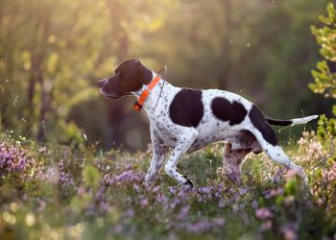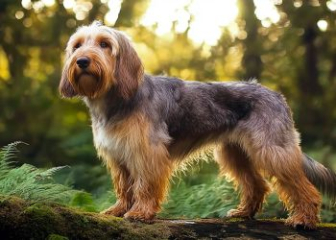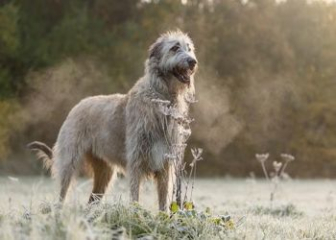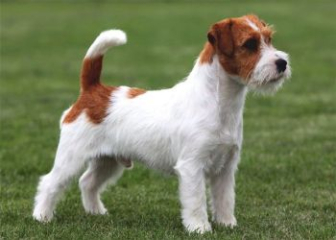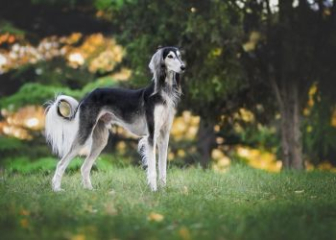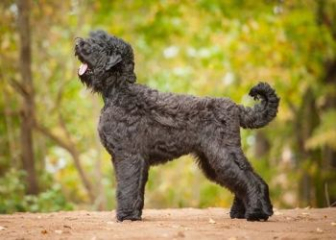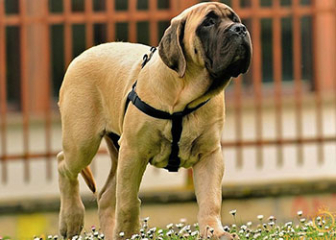Bernese Mountain Dog – The super-friendly tricolor dog breed from Switzerland
Blog | by
The Bernese Mountain Dog is one of four Swiss cattle-herding breeds originating from the Alps, famous for its large size, distinctive tri-color coat, and friendly temperament.
Also known as the Bernese Mountain Dog, this breed from Switzerland has a beautiful appearance featuring a tri-colored coat (black, white, and brown). They're gentle and friendly by nature, exceptional working dogs, and loyal family companions.
Join us in exploring more details about the Dog breed Bernese Mountain in the article below.
Where did the Bernese Mountain Dog originate from?
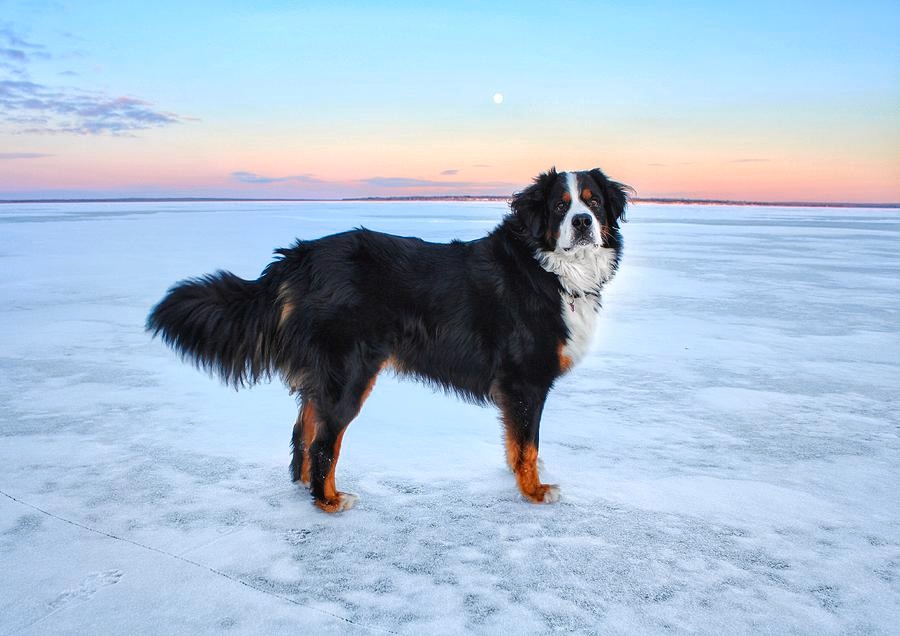
Bernese Mountain Dogs originate from Switzerland
The Bernese Mountain Dog is an ancient breed originating from the Bern region of Switzerland. Historically, it was bred primarily for pulling carts, herding livestock, and serving as a guard dog.
History and Development of the Bernese Mountain Dog:
-
The breed likely dates back to Roman times, when Molosser dogs were brought to Switzerland by Roman soldiers to guard troops and livestock.
-
Later, these dogs were crossbred with local breeds to create a strong dog with protective instincts and versatile working capabilities. The breed was named after the Bern region of the Swiss Alps.
-
By the 19th century, as the need for cart-pulling dogs diminished, the Bernese Mountain Dog breed nearly became extinct.
-
In 1907, Swiss breeders established the Bernese Mountain Dog Club to preserve and promote the breed.
-
In 1937, the American Kennel Club (AKC) officially recognized the Bernese Mountain Dog as an independent breed.
-
Today, while they are no longer used for pulling carts or herding livestock, Bernese Mountain Dogs have become beloved family pets due to their loyalty, gentleness, and intelligence.
-
This breed is now popular in the United States, Canada, and Europe.
Read more: Saint Bernard Dogs, the giant snow rescue breed
Appearance of Bernese Mountain Dogs
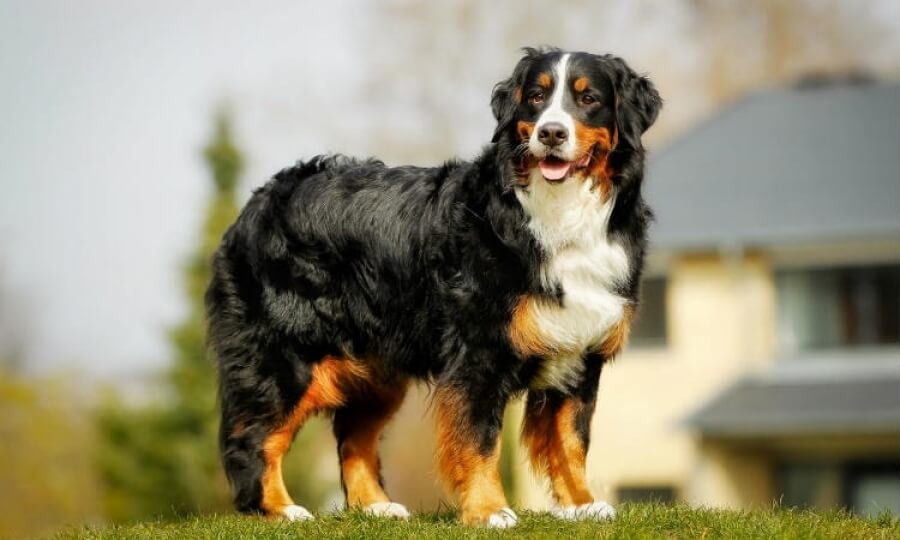
Bernese Mountain Dogs have a distinctive tri-colored coat.
The Bernese Mountain Dog is a large breed with an elegant and graceful appearance, easily recognizable by its distinctive tri-colored coat. Let's explore more about the physical characteristics of a purebred Bernese Mountain Dog.
-
Height: Males from 64 - 70 cm, females from 58 - 66 cm.
-
Weight: Males from 38 - 50 kg, females from 36 - 48 kg.
-
Head: Large and well-proportioned.
-
Eyes: Almond-shaped, dark brown color.
-
Ears: Medium-sized, thickly furred, hanging down alongside the head.
-
Muzzle: Broad, with a black nose.
-
Chest: Deep and wide.
-
Legs: Long, straight; large paws with hair between the toes for better traction.
-
Coat: Long, thick, slightly wavy, soft and silky.
-
Coat colors: Distinctive tri-color pattern, predominantly jet black covering most of the body, white on the chest, muzzle, paws, and a straight line on the forehead, and copper-brown (reddish) markings on cheeks, legs, and chest.
Personality Traits of Bernese Mountain Dogs
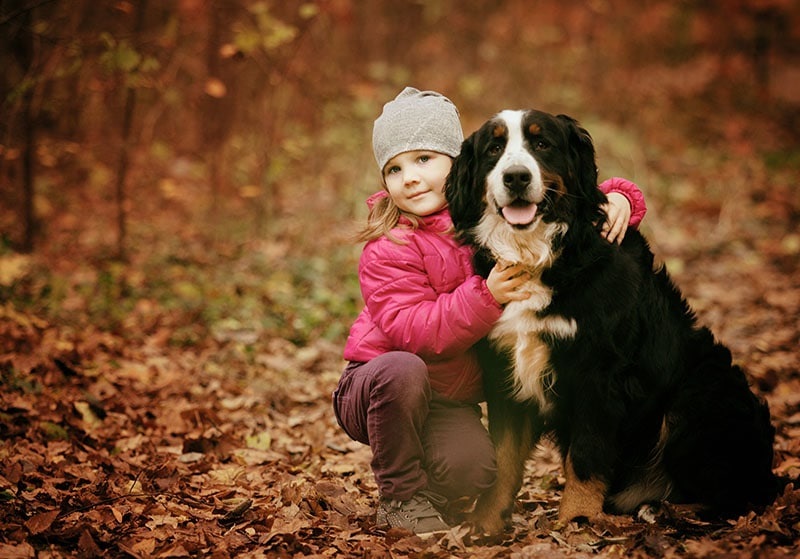
Bernese Mountain Dogs are Friendly Dogs.
Bernese Mountain Dogs attract people not only because of their graceful appearance but also due to their gentle, friendly, and loyal nature. Let’s explore some distinctive personality traits of this breed.
Gentle, Friendly, and Affectionate
Bernese Mountain Dogs have a very gentle disposition. They rarely show aggression and instead are always affectionate towards people, especially children. Additionally, they get along harmoniously with other pets in the household and other dog breeds.
Intelligent and Easy to Train
The tri-colored Bernese Mountain Dog is highly intelligent, learns quickly, and cooperates well during training sessions. They're eager to please their owners, although they may occasionally exhibit stubbornness.
Loyal and Devoted
Bernese Mountain Dogs are extremely loyal to their owners. They always strive to please humans and love being closely bonded to the family. This breed dislikes being left alone for extended periods; otherwise, they might become bored and stressed.
Calm Yet Active
Typically, Bernese Mountain Dogs have a calm temperament but also enjoy running and exploring their surroundings. Therefore, it's advisable to provide ample living space if you decide to keep this breed.
Protective but Not Aggressive
This dog breed has strong protective instincts toward its family. Upon detecting anything unusual, they'll bark to alert their owners. However, they aren't aggressive and typically only bark without attacking.
Proper Care and Raising of Bernese Mountain Dogs
.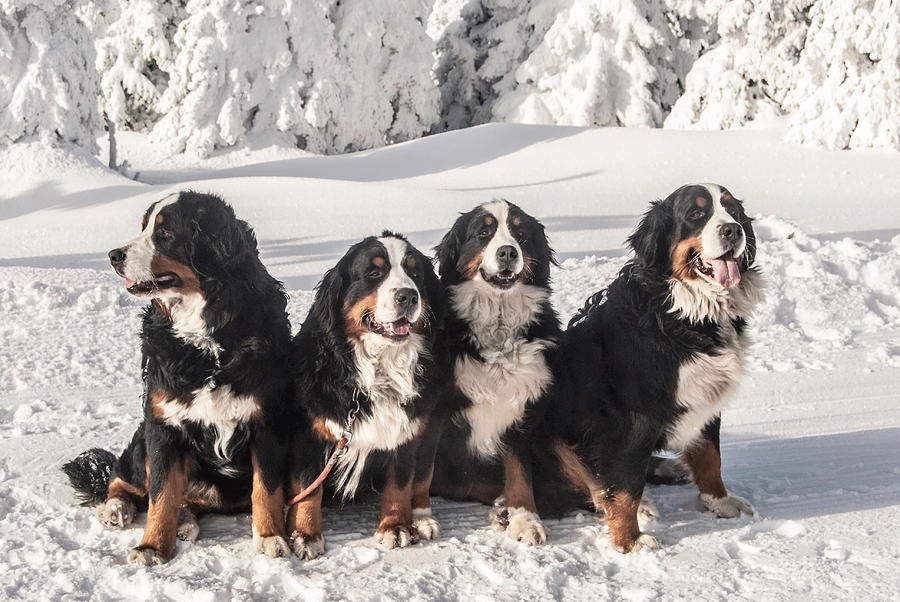
Bernese Mountain Dogs in Cold, Snowy Weather
If you want to know how to properly care for your Bernese Mountain Dog so they stay healthy, develop well, and are always happy, check out the detailed guide below.
Nutrition Guidelines for Bernese Mountain Dogs at Each Life Stage
Bernese Mountain Dogs require different nutritional care depending on their age:
Puppies (2 - 6 months):
-
Meals per day: 4 meals.
-
Protein: Approximately 22–25% of their diet from chicken, beef, pork, eggs, and fish.
-
Supplement calcium and DHA for bone and brain development.
-
Meat and vegetables should be cooked and finely chopped or minced.
-
Add boiled eggs, 2–3 times per week.
-
Provide goat's milk or specially formulated puppy milk.
-
Avoid hard bones, cow's milk, and heavily seasoned food.
Adult Dogs (6 months - 6 years):
-
Meals per day: 2 meals.
-
Protein: About 18–22% of their diet.
-
Good fats should make up 8–10% of their diet.
-
Ensure a balanced intake of fiber and vitamins from vegetables and fruits.
-
Include unsweetened yogurt and fish oil supplements.
-
Avoid oily foods, sweets, chocolate, grapes, garlic, and onions.
-
High-quality dog kibble specifically for large breeds can be provided.
Senior Dogs (over 6 years old):
-
Control calorie intake to prevent obesity as older dogs become less active.
-
Meals per day: 2 meals.
-
Reduce protein to 15–18% of the diet to ease kidney function.
-
Increase fiber intake to aid digestion.
-
Supplement glucosamine to support joints.
-
Provide low-fat foods, steamed vegetables, fruits.
-
Avoid foods high in starch or overly hard foods.
Daily Exercise and Activities
Bernese Mountain Dogs are naturally working dogs and need regular exercise to maintain a healthy weight and a happy, relaxed mood. Recommended exercise:
-
Daily walks of at least 45 minutes to 1 hour.
-
Allow them to run freely in a large, secure space.
-
Combine with games like fetch or tug-of-war.
Grooming and Hygiene Care
Bernese Mountain Dogs have thick, long coats that require careful grooming to prevent skin conditions and maintain their beautiful appearance:
-
Brush the coat 2–3 times per week. During heavy shedding seasons (spring and autumn), brushing daily is recommended.
-
Bathe once every 1–2 months or when dirty, using shampoo specifically for dogs.
-
Trim nails monthly.
-
Check and clean ears once per week.
-
Brush teeth 2–3 times per week to prevent oral diseases.
Early Training and Socialization
Early training and socialization help Bernese Mountain Dogs become obedient, confident, and friendly:
-
Expose them early to strangers and other animals to encourage confidence and friendliness.
-
Teach basic commands such as: sit, stand, lie down, no barking, potty training, etc.
-
Avoid harsh methods during training. Use positive reinforcement, as this breed is sensitive.
Healthcare and Disease Prevention
To keep your Bernese Mountain Dog healthy, regular vaccinations and routine check-ups are essential:
-
Vaccinate against rabies, parvo, distemper, canine influenza, coronavirus, etc., using 5-in-1 or 7-in-1 vaccines.
-
Deworm regularly every 3–6 months.
-
Health checks as advised by your veterinarian, typically 1–2 times per year.
Suitable Living Environment for Bernese Mountain Dogs
Bernese Mountain Dogs require spacious living conditions as they enjoy running and outdoor activities. They are better suited to cooler or cold climates and struggle with heat. If raised in hotter regions such as Vietnam, you should:
-
Provide plenty of fresh, cool water.
-
Avoid outdoor activities during midday heat.
-
Ensure the living space has fans or air conditioning to keep them cool.
Common Diseases in Bernese Mountain Dogs
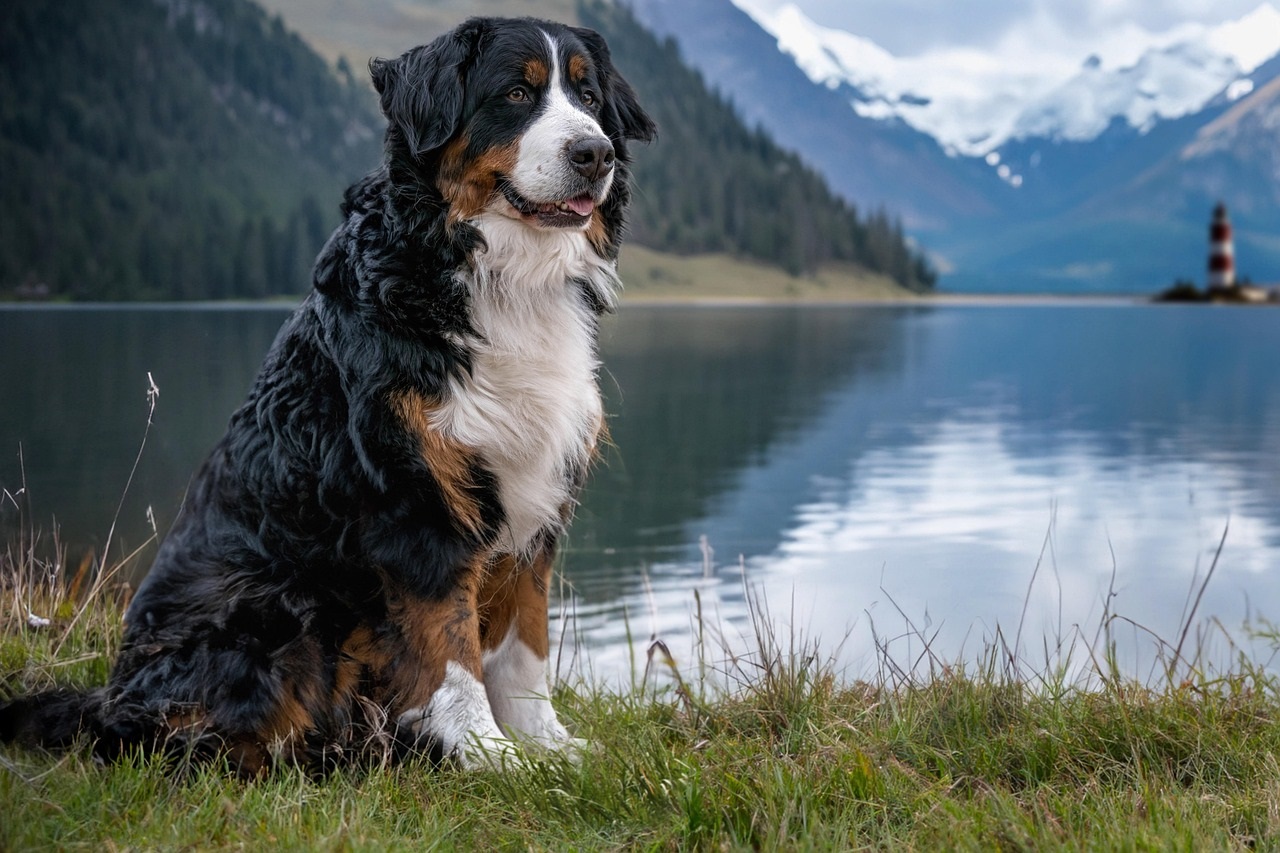
Image of a purebred Bernese Mountain Dog beside a lake.
Bernese Mountain Dogs have a relatively short lifespan compared to other breeds, typically around 6 to 8 years. They're prone to various genetic disorders and joint problems due to their large size. Below are some common health issues in Bernese Mountain Dogs and how to recognize, prevent, and treat them effectively.
Hip and Elbow Dysplasia in Bernese Mountain Dogs
This hereditary disease is common among large and medium-sized breeds, making Bernese Mountain Dogs highly susceptible.
-
Cause: Genetic.
-
Symptoms: Limping, difficulty standing up or sitting down, pain in hip or elbow joints when touched.
-
Prevention and treatment: Control body weight to reduce pressure on joints, provide glucosamine supplements, and surgical intervention if symptoms worsen.
Gastric Torsion (Bloat) in Bernese Mountain Dogs
Bernese Mountain Dogs have deep chests, increasing their risk of developing gastric torsion (bloat).
-
Cause: Breed anatomy, eating too quickly, swallowing excess air.
-
Symptoms: Abdominal swelling, frequent whining due to pain, retching without vomiting, rapid breathing.
-
Prevention and treatment: Feed several smaller meals daily, avoid vigorous exercise after eating, and seek immediate veterinary attention if severe symptoms appear.
Cancer
Bernese Mountain Dogs have a high incidence of cancer, particularly mast cell tumors and bone cancer.
-
Symptoms: Lumps under the skin, lethargy, fatigue, rapid weight loss.
-
Prevention and treatment: Regular health checkups to detect and manage the disease early.
Von Willebrand’s Disease (VWD)
This dangerous genetic bleeding disorder is common in Bernese Mountain Dogs.
-
Symptoms: Prolonged bleeding from wounds, frequent nosebleeds, bleeding gums.
-
Prevention and treatment: Regular health checkups, follow veterinarian’s treatment plan, and carefully check the dog's genetics and lineage before purchasing.
Pricing and Buying Guide for Bernese Mountain Dogs
If you're interested in owning a Bernese Mountain Dog, refer to the price list and buying tips below.
Price reference for Bernese Mountain Dogs in Vietnam
Prices depend on factors like breed purity, origin, documentation, appearance, and gender:
| Origin | Price (reference) | Notes |
|---|---|---|
| Vietnamese-born Bernese Mountain Dog (no documents) | 10 - 15 million VND | No documentation; lower breed purity. |
| Vietnamese-born Bernese Mountain Dog (with documents) | 15 - 25 million VND | Full documentation, purebred. |
| Imported Bernese Mountain Dog from Thailand | 20 - 30 million VND | Fully documented, high quality. |
| Imported Bernese Mountain Dog from Europe | Over $3000 USD (approx. over 70 million VND) | 100% purebred, complete documentation, vaccinations, excellent appearance. |
Tips for Purchasing a Bernese Mountain Dog
To buy a healthy Bernese Mountain Dog at a good price, remember these points:
-
Thoroughly check the dog's pedigree, documents proving breed purity, and vaccination records.
-
Inspect the dog's physical condition and health, ensuring they're active and alert.
-
Compare prices from reputable pet shops or breeders.
-
Assess whether your financial situation and living conditions are suitable since Bernese Mountain Dogs require spacious environments and meticulous care.
Beautiful Bernese Mountain Dog Image Collection
Below, we've gathered some of the most beautiful pictures of Bernese Mountain Dogs for you to enjoy.
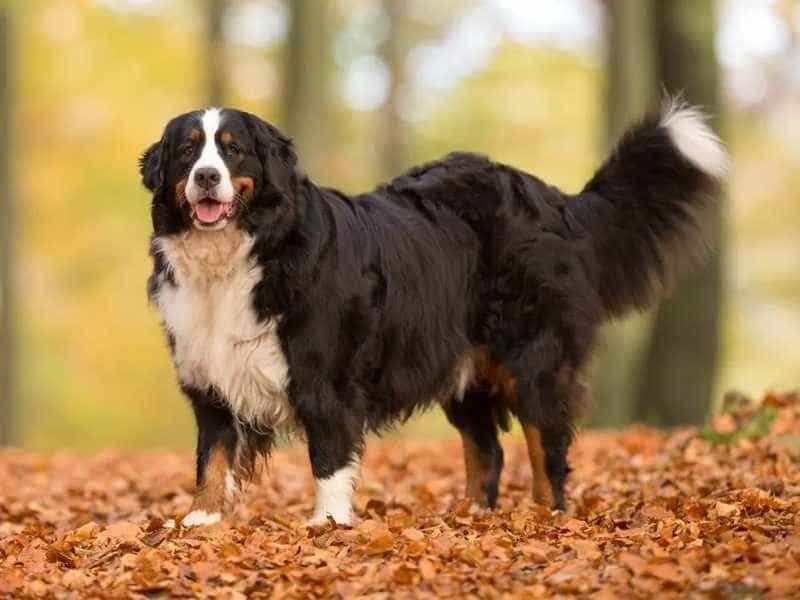
The Bernese Mountain Dog has a graceful appearance
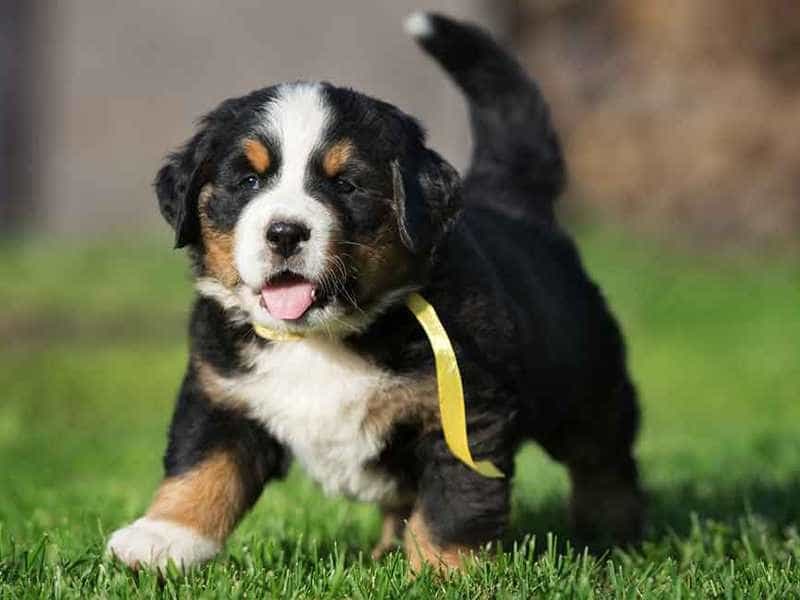
Bernese mountain dog puppies are so cute
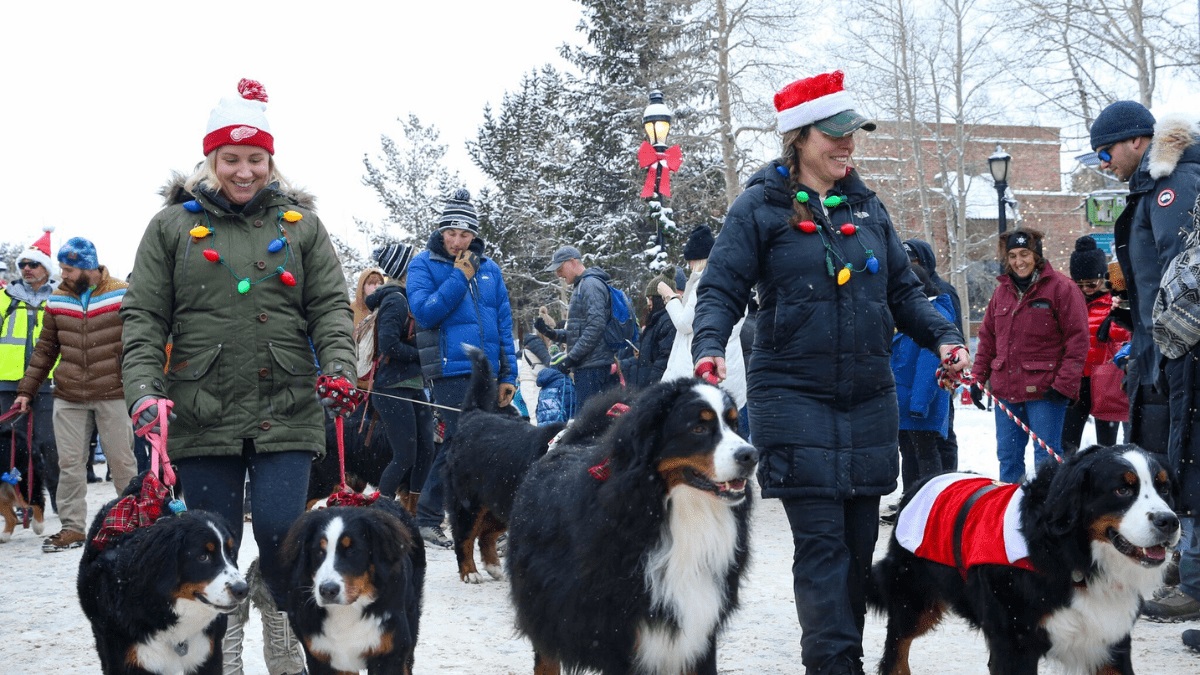
Bernese mountain dogs take part in a street festival in Switzerland
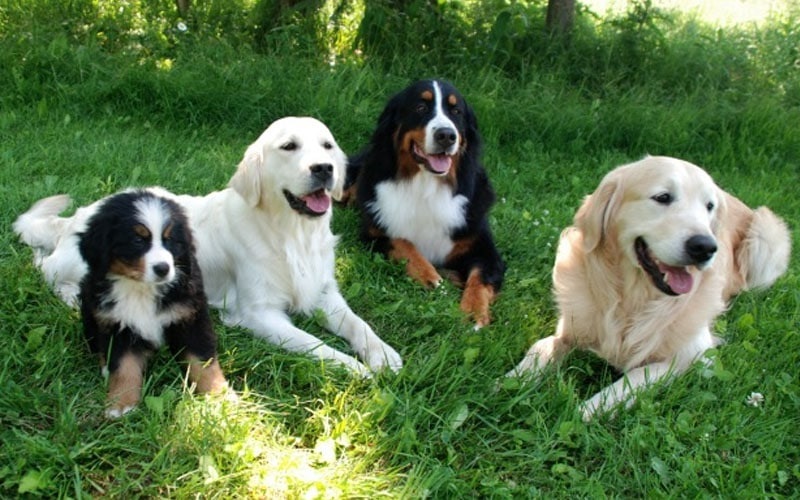
Bernese Mountain Dog and friends
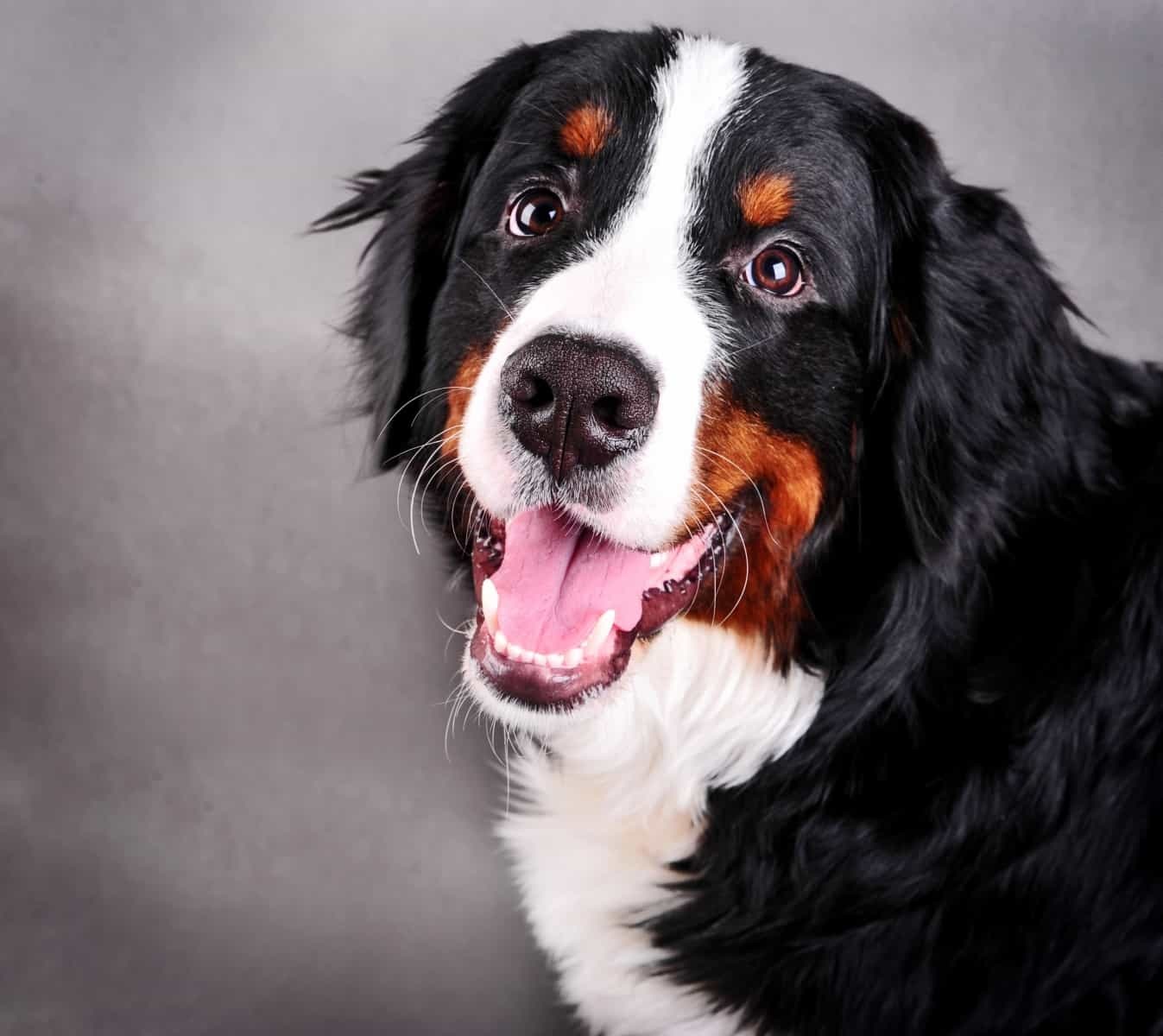
Bernese Mountain Dogs have bright, intelligent faces
Through the article above, dogbreed.wiki has provided you with extensive information about Bernese Mountain Dogs. This breed is not only beautiful with its distinctive tri-colored coat but also makes a wonderful companion for families.
Goodbye, and see you again in other articles in our Blog section to learn more about various dog breeds around the world!

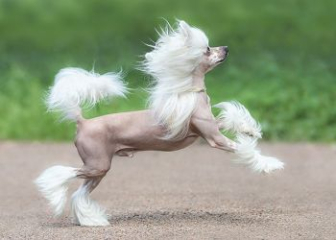
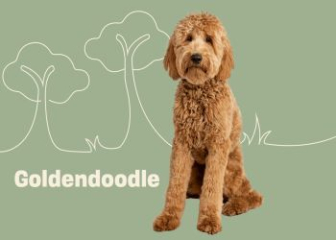
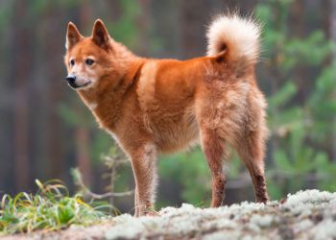

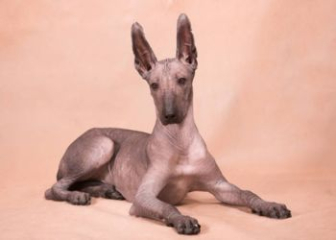
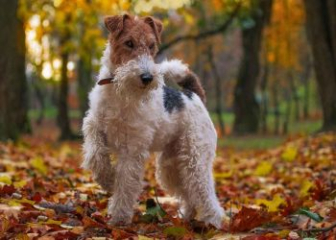


_350x250.jpg)

